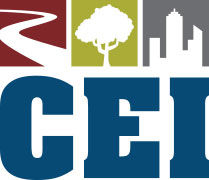With energy costs on the rise, homeowners are increasingly focused on making their homes as efficient as possible. While there are many options for improving energy use, under-eave panels — commonly referred to as soffits — offer a valuable yet often underestimated solution. These panels, located beneath the roof overhang, manage airflow, control moisture, and stabilize temperatures, all of which contribute to a more sustainable home.
In this guide, we’ll explore how these panels can significantly boost energy efficiency, providing lasting benefits for both comfort and cost savings.
The Function of Under-Eave Panels
Under-eave panels, often referred to as soffit installation, serve as a ventilation system for attic spaces, helping to regulate both temperature and humidity levels. Installed between the roofline and the home’s outer walls, they maintain balanced airflow, which is essential for protecting insulation and reducing structural wear. Without proper ventilation, hot air can accumulate in summer, while moisture can get trapped in colder months, potentially causing issues like mold growth and wood rot.
When installed correctly, these panels help keep attic spaces at a consistent temperature and protect insulation from the damaging effects of trapped heat and moisture.
Key Benefits of Installing Under-Eave Panels
1. Enhanced Airflow
A major advantage of these panels is their ability to improve airflow within attic spaces. By facilitating proper ventilation, they prevent heat buildup, which is especially beneficial during hot weather. Vented designs allow fresh air to circulate while pushing out warm, stale air, leading to lower cooling costs in summer.
2. Consistent Temperatures Year-Round
These panels are also invaluable during colder months. Without adequate ventilation, warm indoor air can become trapped, which often leads to condensation on cold surfaces. This buildup can cause frost and even structural damage over time. When air flows freely, it helps maintain consistent temperatures, preventing heat loss and reducing the energy needed to keep a home warm in winter.
3. Moisture Control for Insulation Protection
Moisture control is critical for insulation performance. If insulation becomes damp, it loses effectiveness, requiring more energy to heat or cool the home. Proper ventilation keeps insulation dry, reducing the need for repairs and protecting indoor air quality by preventing mold and mildew.
Additional Benefits Beyond Energy Savings
Installing these panels provides other advantages that go beyond energy efficiency:
- Enhanced Exterior Appearance: By covering the under-roof area, the panels offer a polished, finished look to the exterior, hiding rafters and adding a neat touch.
- Protection from Pests: These panels also prevent entry points for pests, such as rodents, birds, and insects, which can cause structural damage and bring contaminants into the attic.
Choosing the Right Material for Longevity
The material of the panels significantly affects their efficiency and durability. Here are some common options:
- Aluminum: This rust-resistant option offers durability and requires minimal upkeep, making it ideal for various climates.
- Vinyl: Lightweight and affordable, vinyl is moisture-resistant but may not be as durable as metal in extreme weather.
- Wood: Known for its natural insulation properties, wood requires frequent maintenance to avoid water damage or rot, making it less common in newer installations.
Choosing the right material affects how well the panels perform over time, with aluminum and vinyl generally offering better resistance to moisture and maintenance needs.
For quality materials and expert installation, check out http://maxima-aluminum.com/ for tailored solutions that fit your home’s needs.
The Long-Term Savings of Installing Under-Eave Panels
These panels are a long-term investment that contributes to a more comfortable, efficient living environment. They reduce the demand on heating and cooling systems, leading to lower utility bills. Additionally, by protecting insulation and preventing moisture buildup, they help avoid costly repairs.
Although the initial investment may seem significant, the energy savings, added comfort, and lower maintenance costs make these panels a practical choice for homeowners looking to improve energy performance.
Getting Started with Under-Eave Panels
For those aiming to boost energy efficiency and maintain their home’s structural integrity, under-eave panels are a highly effective upgrade. Selecting the right materials and working with professionals to ensure proper installation will maximize ventilation, stabilize temperatures, and control moisture — all essential for a more efficient home.
As energy efficiency becomes a priority for more homeowners, these panels stand out as an invaluable feature that provides both immediate and long-term benefits.




























